![]()
Saturday, March 28, 2014 | By Rob Harris
This article is part 1 of an extended study of Irish news media on the Israeli-Arab conflict. You can read part 2 here and part 3 here.
Irish Middle-East analyst Doctor Rory Miller asserted that the Irish media historically motivated anti-Israel posturing amongst Irish political elites, at a time when the international media exhibited a lesser antagonism toward the Jewish State. Today, Ireland is regarded as one of the most anti-Israel nations in the Western world. Whether this charge is true or not, it can be justifiably suggested that the Irish media continues to shape inaccurate and hostile narratives.
This article largely focuses on RTE’s News reports. RTE is Ireland’s state-funded radio and television broadcast institution. It has a distinct monopoly, in terms of national radio and television channels, with six of the eight SaorView television channels on the free terrestrial digital transmission platform, until a further independent channel was launched in 2015. Analysis of TV3 is also included, which in 2014 was the sole privately owned Irish television broadcaster. It tends to achieve smaller viewer figures.
Any entity that constitutes a source of information should be open to scrutiny. Questions, such as “is the information correct or not”, “can the organisation verify its claims”, “does the organisation have a past indicative of prejudice”, etc. are all legitimate questions that we can ask of any information source.
These questions become especially important for organisations that constitute a constant and prolific mainstream source of information on current affairs. Mainstream media organisations play a substantive role in the shaping of society on a broad spectrum of issues. The role they play is pivotal, for any given society is dependent upon these entities to advise and inform. TV3’s role is important in this regard, and RTE’s especially so, since it constitutes a public service broadcaster with a significant monopoly. Remits to inform audiences should of course be applied in an impartial fashion, without undue politicisation. We should also expect good standards of accuracy and insight from public service broadcasters, which, due to tax funding, are in theory less subject to narrow commerical constraints.
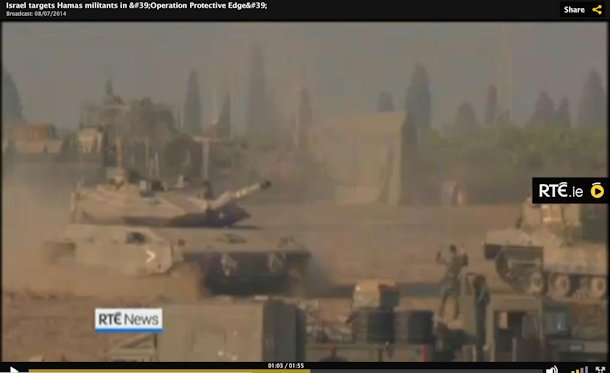
Screen grab of RTE lunchtime news and sports bulletin, 8 July, 2014, Israeli side. (Source: RTE video)
Broadcasters are acutely aware of the importance of reputations for accuracy. At a recent Irish State Committee hearing, Ms. Moya Doherty, a member of the RTÉ Board, argued that it would make “little sense” for the Broadcaster to be politically prejudicial because it would “fundamentally undermine the public trust in everything RTÉ does”.
The featured examples of Irish media reportage should not be treated as a complete study on coverage of the Israeli-Arab conflict in Ireland, in part because the focus is on televisual broadcasting, rather than radio, the print media etc. Being examples, they do not constitute a comprehensive analysis. The RTE news reports represent the most extensive sample herein, but it should be noted that they are just a fraction of the number of features actually broadcast on the conflict. The coverage of discussion shows is better represented. The cited examples are indicative of the broader tone of the public broadcaster’s coverage on the topic, where opinion and analysis of the conflict illustrate RTE’s own political outlook.
Summary assertions
Part Two and Part Three of this extended article feature a selection of instances of substantive bias in reports and discussions in the Irish televisual media, through the latter half of 2014. This period is selected as it began with the kidnapping and murder of three Jewish-Israeli teenage males. The kidnap-murder initiated a phase of escalation in the Israeli/Jewish-Arab/Palestinian conflict. A sequence of events ensued, including the 2014 Gaza war, ‘Operation Protective Edge’, the near-intifada violence in Israel during the aftermath of the war, and the Palestinian Authority’s activities at the United Nations.
Unfortunately, the numerous examples cited in Part Two demonstrate that RTE has a propensity to present the Israeli-Arab conflict in a manner that is both favourable to Arab-Palestinians, and injurious to Jewish-Israelis. The failings relate to very basic matters of balance, where in some instances only one account of contested events was presented, failings in terms of the veracity of factual claims, and a lack of disclosure that some sources, and interviewees, are not disinterested observers of the conflict.
There were some similar concerns with TV3’s coverage, albeit criticism relates more so to discussion programmes. The specific instances cited relate to ‘The Vincent Browne Show’, which was of a distinctly lower standard than ‘Prime Time’, RTE’s broadly equivalent current-affairs programme.
The scope of this bias suggests that both Irish broadcasters cannot be firmly relied upon to report or discuss events appertaining to the issue with quite modest expectations of basic accuracy and balance.
It can be argued that both broadcasters presented a significant amount of programming that unduly limited access to the perspectives of one side in this conflict. The consistent patterns suggests an intentional prejudice on the part of programme makers, and, as a consequence, may constitute a violation of Section 39/1 of the 2009 Broadcasting Act, which obliges broadcasters to ensure all news reports be “presented in an objective and impartial manner and without any expression of the broadcaster’s own views.”
Proportionality
On the 24th July, RTE’s 6.1 News featured 16 minutes on the death of 15 in Gaza, and spent 15 seconds on 82+ killed in a terrorist attack in Nigeria. We may assume that the importance alloted to each story, by news-editors, is based on quite obvious features, such as our cultural, religious, and geographic proximity to those killed, whether those killed were innocent civilians (greater interest) or combatants (lesser interest), and the sheer scale of the tragic deaths in question. In both instances, civilians were killed, and, in both cultural and geographic terms, the distance of the typical Irish viewer to these deaths was very substantial. Thus, the scale of the loss of life would be a prime interest in determining the degree of coverage both events warranted. However, the smaller event obtained a 60 fold increase in broadcast time, despite the larger event having a 5.5 fold higher death toll. Whilst this dry numerical comparison may seem unfairly selective, it nonetheless illustrates a major issue with proportionality.
It might be argued that there is a greater interest in Israel itself, as it is a notionally more Western State, and so somehow closer to the sphere of Irish interest than the other contemporaneous conflicts of the period. However, RTE largely ignored the Ukrainian conflict during the war in Gaza, until the downing of the uninvolved Malaysia Airlines Flight MH17, which led to the death of almost 300 civilians.
RTE’s news editors are of course fully entitled to follow their own sense of what topics they ought to feature most highly. However, a very modest sense of proportionality must surely follow, if RTE’s remit is to inform its viewers. When it comes to the troubled Middle East, the Gaza war was the event that truly registered on RTE’s radar, from its commencement to cessation. It was impossible to deduce from watching RTE’s news coverage that concurrently there was an immense loss of life in Syria and Iraq, while the war in Gaza was at its peak. The unprecedented bloody rise of ISIS’, did get significant coverage. However, even at its most newsworthy, ISIS never quite got the same degree of coverage as the Gaza war received at its peak. It echoes RTE’s limited coverage of the Sri Lankan war of 2009, which ran in a largely parallel timeframe to ‘Operation Cast Lead’, the first major Gazan war between Hamas and Israel. Similarly, there was almost no mention of the starvation and death of large numbers of Arab-Palestinians based in Syria the preceding year, nor of displacement due to civil war.
Addressing potentials for incitement
The examples illustrate a notable trend in RTE’s news reportage of the time. RTE failed to present meaningful contexts, because their narratives focused on Israeli actions, with little or no comment about the actions of opponents. This highly partial form of narrative can compel the viewer to conclude that Israeli actions should be deemed aggressive rather than defensive, and, due to the way in which the narratives were framed, any explanation provided by Israeli commentators would appear to be excuses.
When images of military activity appeared, Israel’s forces were those invariably featured. Imagery of Hamas was an extremely rare sight. The imagery of this conflict focused intensively on the injury of children. The suffering of children is of course newsworthy but this focus was highly disproportionate. For example, before and after the 24th of July Beit Hanoun school missile strike, news-features on the topic could lead with images of distressed children, and TV interviews featured repetitive video loops of injured children. During the same period, RTE’s ‘News Now’ channel featured highly emotive motifs of Gazan infants in its revolving ‘Top Stories’ news-box, located on the top-right of TV screens.
The display of the impact of war upon a civilian populace is an important feature of news reportage. It is entirely fair to present images of distressed children but to focus on them above almost all else has become a worrying international trend in the mainstream media. Whether intentional or not, the selection of such images presented stark suggestions that the Jewish State intentionally murders children, akin to old anti-Semitic blood-libel. Media coverage of the conflict has been linked with the rise of anti-Semitism in Britain and the European mainland. In recent years, hate-crimes against Jewish minorities have multiplied during times of conflict in Israel and its environs.
Ireland’s Jewish populace is less of a conduit to hostility, perhaps because it is extremely small. Yet during the Gaza war, a well-known Irish comedic actor received death threats and anti-Semitic abuse for hosting an Israeli film event, while a sports pundit issued a violent anti-Semitic tweet after watching TV news coverage of the conflict. The open rhetoric from pro-Palestinian quarters became so intense that it verged on overt anti-Semitism, and emanated from various quarters.
Ultimately, it would be a genuine wrong for the mainstream media to censor disturbing imagery that emanates from conflict zones. However, the broadcast industry has tight ethical and legal guidelines with respect to the coverage of news. Prejudicial reportage is never desirable, and could have an impact on the welfare of the Jewish populace, as has been the case in other regions of Western Europe. The broadcast industry could act more responsibly, by addressing stories involving Israel with a modest sense of proportionally, and pay special attention to due diligence, because intensive demonising propaganda has long been a mainstay of this conflict, for which the media has often been a conduit.
Rob Harris contributes articles to several websites on contentious political issues (not to be confused with the popular English novelist (1957-) of the same name). He blogs at eirael.blogspot.com. He lives in Ireland. For all the exclusive blog entries by Rob Harris, go here.



 RSS
RSS

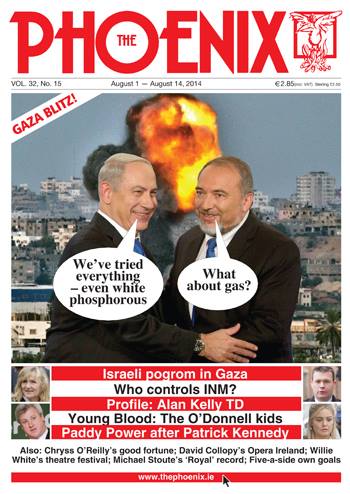
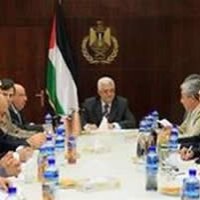
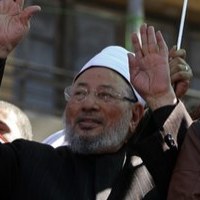

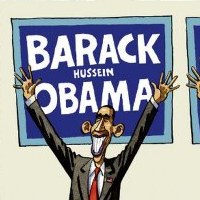
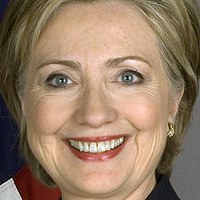




Latest Comments
Hello Mike, Thank you for your positive feedback to the article. I felt there wasn’t too much critical analysis of ...
Thanks for this considered and well constructed article. A follow up article on the manner in which the editorial contro...
THE CLUELESSNESS OF CLAIMING THAT OBAMA'S MIDDLE EAST POLICIES WERE A FAILURE CANNOT BE FURTHER FROM THE TRUTH, WHAT THE...
As long as Obama is the president of the usa do not trust the us government......
Thank you for an good read....